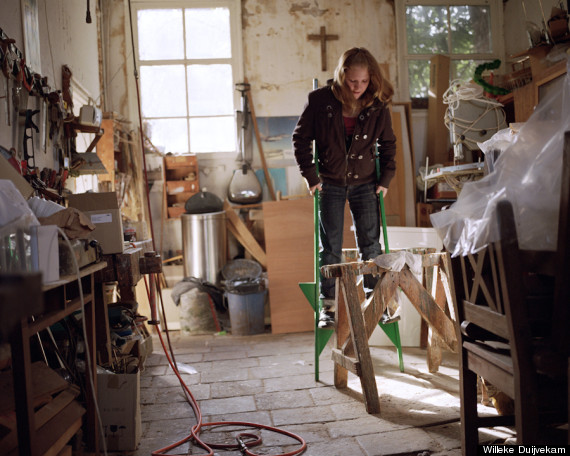'Mandy and Eva,' Documentary Photography Book, Explores Trans Lives
Over the course of six years, documentary photographer Willeke Duijvekam followed the lives of two transgender girls as they came to live as their own authentically, realized selves.
Duijvekam is a photographer who takes an interest in people whose lives differ from the socially expected norm, and he decided to embark on documenting the lives of Mandy and Eva, the results of which are featured in the new book Mandy and Eva .
In order to better understand his work and his vision for the book, The Huffington Post chatted with Duijvekam this week.

The Huffington Post: Where did the inspiration for the project come from?
About ten years ago I met a youngster who felt uncomfortable about his gender. His mother told me stories which showed me how little understanding there was from his surroundings and how her son suffered beneath them. Her stories touched me. I also had never heard of gender dysphoria. I was guided by my fascination with the perplexing split between body and mind. But also by the courage of the young people who refuse to allow society’s expectations to dictate their lives.
How is this project different from other photo essays you’ve seen about transgender people?
I think because I followed Mandy and Eva for so long, my eyes were able to penetrate far below the surface. When you begin to photograph you see the outside first.
Gender dysphoria is a complex condition that can be difficult to understand. I wanted to get to know them and try to live in their daily struggle between inner life and appearance, so that I could transfer my perception to the viewer.

You spent six years with Mandy and Eva — how did your relationship grow and how is that seen in the photos?
Willeke Duijvekam: My relationship became closer, my presence as a photographer more natural. In the beginning I was still an outsider. That you can see in the photos. In the beginning of their transition phase they were both concerned with the evidence for the outside world. I too was initially seen as that “outside world.” Mandy, for example, was constantly working with all kinds of girly things to show how limber she is, dancing etc. Later in the series you can see she is not busy with “proofing” herself anymore.
What’s the most surprising thing you learned while doing the project?
I learned a lot from the parents of Mandy and Eva. How they support their children and give them all space and opportunities they need to be happy with their own being.

Were there any moments that you captured that ended up feeling to personal to share?
Yes, there were. Especially with Eva, I have all the “milestones” she experienced and everywhere I was with her I brought my camera. I captured all her important milestones. For example, the moment she told her classmates she felt like a girl, but also the moments around her [gender confirmation] operation. They were personal, emotional moments for her, and her family. I have deliberately chosen to show no drama, but recognizable, almost casual moments. This is how I think the viewer comes closer to the emotional world of Mandy and Eva, without feeling like a voyeur. By showing no drama, but the everyday struggle of two teenagers, this document remains close to their own experiences.
What do you want viewers to take away from the photos?
What I want to show is that Mandy and Eva are two remarkably normal girls -– the one more vivacious, the other quieter –- who do nothing other than live according to the dictates of their feelings. Buy the book and you’ll see what I mean.
For more information about Willeke Duijvekam, Mandy and Eva and how you can purchase the book, head here.
You Might Like
